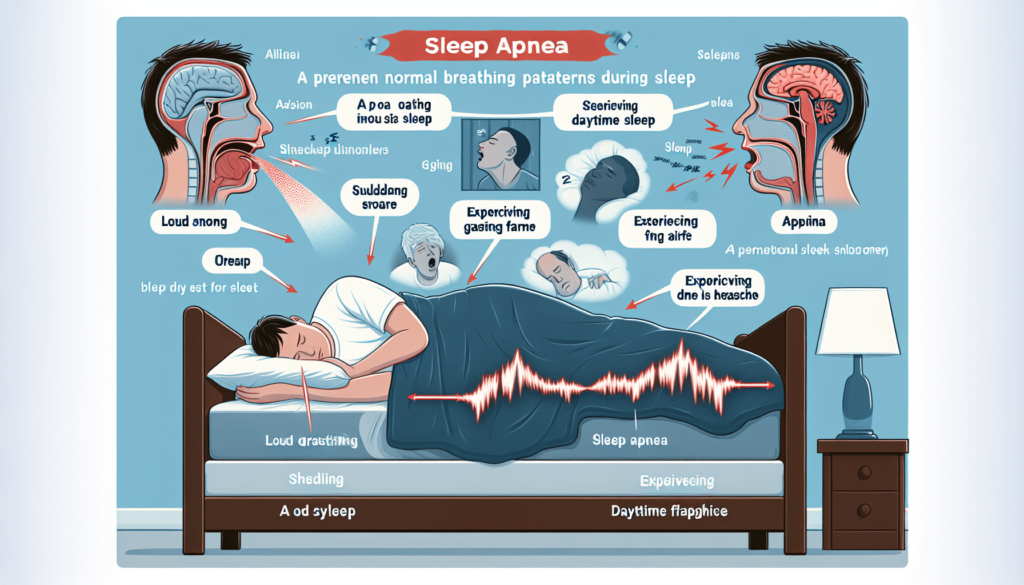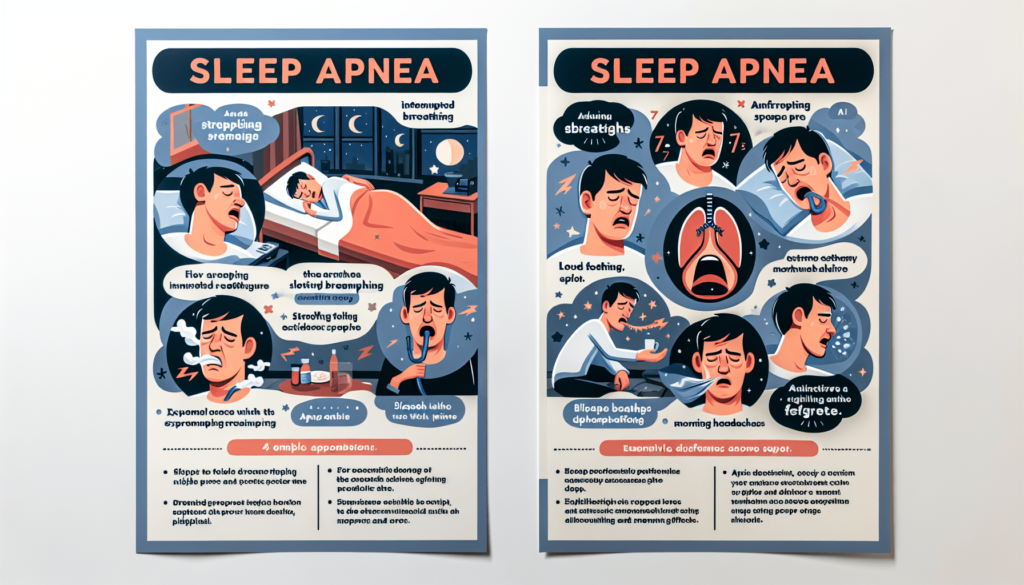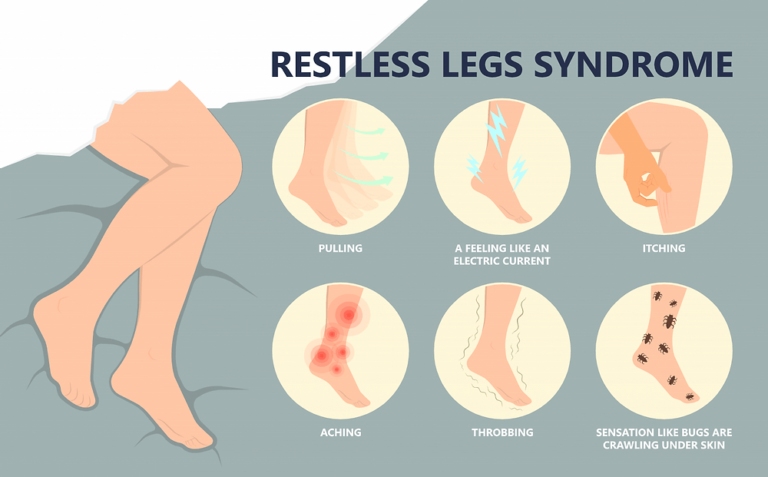Understanding Sleep Apnea: Identifying Symptoms for Effective Home Diagnosis
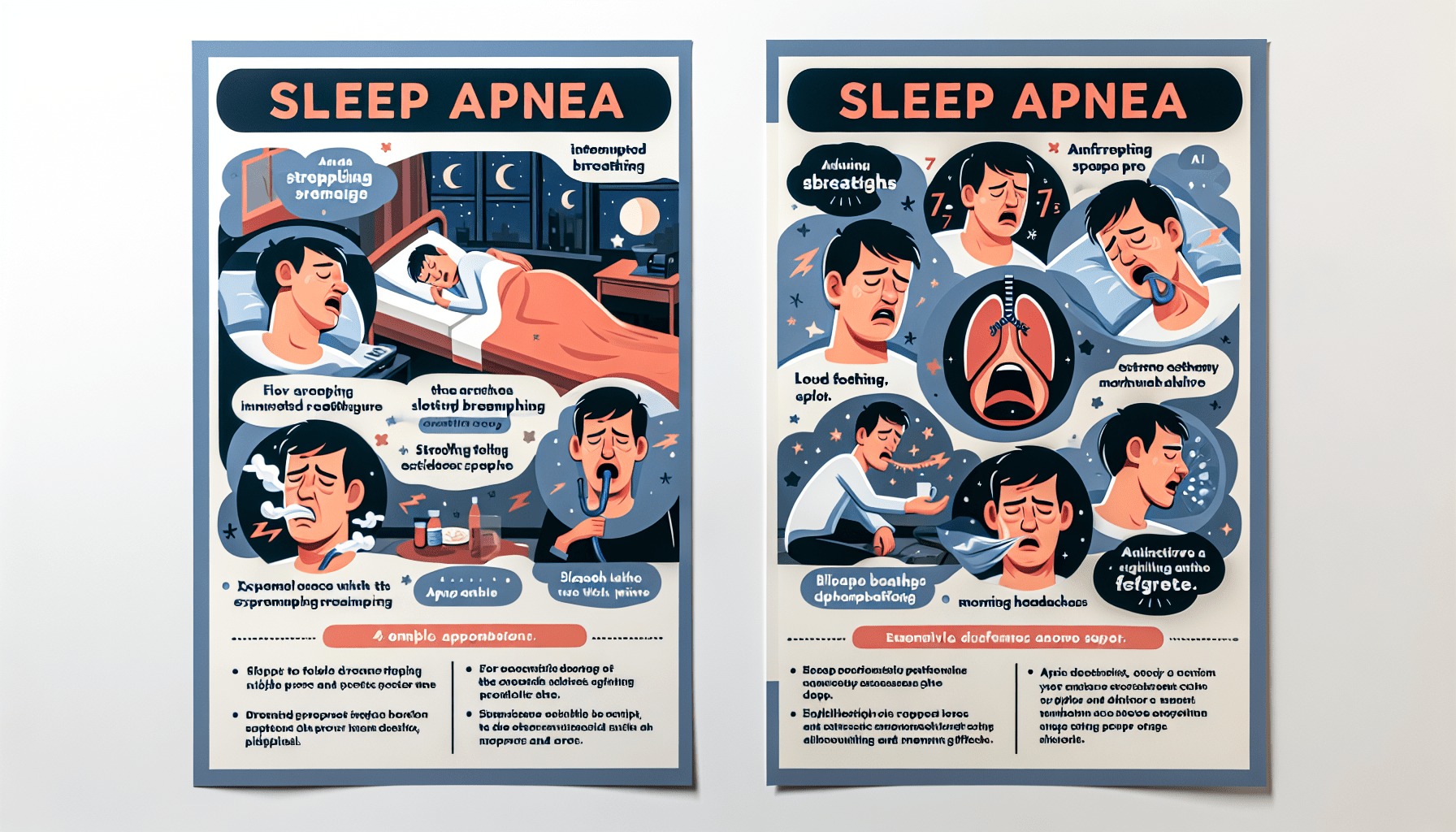
Understanding Sleep Apnea: Identifying Symptoms for Effective Home Diagnosis
Sleep disorders have become a common problem in today’s fast-paced world, with conditions like insomnia and sleep apnea taking a toll on our health and productivity. At Vector Sleep Clinic, we understand the consequences of untreated sleep disorders, which can range from heart attacks and high blood pressure to problems at home and work. That’s why we offer comprehensive care to help you achieve restful sleep. In this article, we will focus on sleep apnea and the importance of identifying its symptoms for effective home diagnosis. By being aware of these signs, you can take the necessary steps to improve your sleep and overall well-being. So, let’s dig deeper into this vital topic together!
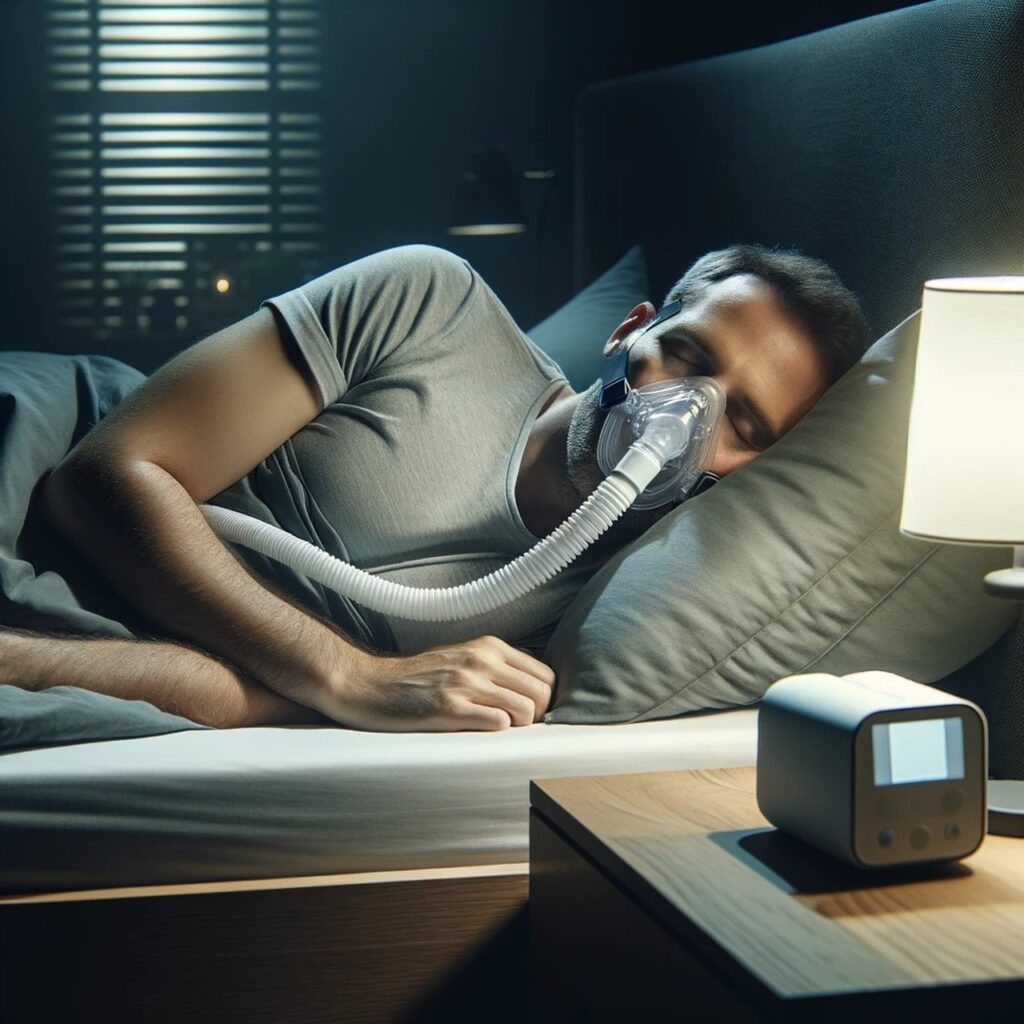
This image is property of pixabay.com.
Sleep Apnea: Understanding the Problem
Sleep apnea is a common sleep disorder that affects many individuals around the world. It is characterized by pauses in breathing during sleep, leading to disrupted sleep patterns and potential health risks. Understanding the problem of sleep apnea is essential in order to identify symptoms, seek diagnosis, and explore treatment options.
Types of sleep apnea
There are three main types of sleep apnea: obstructive sleep apnea (OSA), central sleep apnea (CSA), and complex sleep apnea syndrome (CompSAS). OSA is the most common type, occurring when the muscles in the throat fail to keep the airway open during sleep. CSA, on the other hand, is caused by a lack of respiratory effort during sleep. CompSAS is a combination of both OSA and CSA.
Causes of sleep apnea
Sleep apnea can have various causes, including physical factors such as obesity, large tonsils or adenoids, and a recessed chin. It can also be caused by structural abnormalities in the throat or airway, as well as medical conditions such as hypothyroidism and neuromuscular disorders. Additionally, lifestyle factors such as smoking, alcohol consumption, and sedative use can contribute to the development of sleep apnea.
Common risk factors for sleep apnea
Several risk factors can increase the likelihood of developing sleep apnea. These include being overweight or obese, having a family history of sleep apnea, being male (although sleep apnea can occur in women too), being over the age of 40, having a large neck circumference, and having nasal congestion or blockages. It is important to be aware of these risk factors and take necessary steps to identify and address potential sleep apnea symptoms.
Importance of Identifying Sleep Apnea Symptoms
Recognizing symptoms of sleep apnea is crucial for early detection and effective management of the disorder. Untreated sleep apnea can have significant negative effects on both physical and mental health, as well as impact daily life and productivity.
Effects of untreated sleep apnea
If left untreated, sleep apnea can lead to a range of negative effects on the body. These can include increased risk of cardiovascular issues such as high blood pressure, heart disease, and stroke. Sleep apnea has also been linked to diabetes, depression, weight gain, and decreased immune function. Additionally, it can contribute to daytime fatigue and reduced cognitive function, posing risks in professional and personal life.
Health risks associated with sleep apnea
Sleep apnea not only affects the quality of sleep but also poses significant health risks. Chronic interruption of breathing during sleep can strain the cardiovascular system, leading to hypertension, heart disease, and even heart attacks. Additionally, the decrease in oxygen levels during apnea events can negatively impact various organs and systems in the body, including the brain, liver, and metabolism.
Impact on daily life and productivity
Sleep apnea can have a profound effect on daily life and productivity. The interrupted sleep caused by apnea events can result in excessive daytime sleepiness, making it difficult to stay awake and alert during daily activities. This can impair job performance, increase the risk of accidents, and strain personal relationships. Furthermore, the fatigue and cognitive impairment caused by sleep apnea can affect memory, concentration, and overall mental well-being.
Recognizing Sleep Apnea Symptoms
Identifying common symptoms of sleep apnea is vital for prompt diagnosis and appropriate treatment. While some symptoms may be more obvious than others, it is important to pay attention to any signs that may suggest the presence of sleep apnea.
Loud and chronic snoring
One of the most noticeable symptoms of sleep apnea is loud and chronic snoring. Snoring occurs when the airway is partially blocked during sleep, causing vibrations in the throat. In the case of sleep apnea, snoring is often extremely loud and persistent, with pauses in breathing between snores.
Pauses in breathing during sleep
Another key symptom of sleep apnea is the presence of pauses in breathing during sleep. These pauses, known as apnea events, can last for several seconds to a minute and can occur multiple times throughout the night. They are often followed by gasping or choking sounds as the individual awakens briefly to restore normal breathing.
Gasping or choking during sleep
Gasping or choking sensations during sleep are often associated with sleep apnea. These sensations occur as the body reacts to the sudden restoration of normal breathing after an apnea event. They can be alarming not only for the individual experiencing them but also for their sleep partner.
Excessive daytime sleepiness
Excessive daytime sleepiness is a common symptom of sleep apnea. The interrupted sleep caused by frequent apnea events can result in feeling excessively tired and sleepy during the day, regardless of the amount of sleep obtained the previous night. This can make it difficult to stay awake and focus on daily tasks.
Morning headaches
Waking up with a headache is another potential symptom of sleep apnea. The decrease in oxygen levels and disruptions to normal sleep patterns can cause headaches upon waking. These headaches are often described as dull and throbbing, and they may subside as the day progresses.
Difficulty concentrating
Sleep apnea can have a negative impact on cognitive function, leading to difficulties with concentration and memory. Individuals with sleep apnea may find it challenging to stay focused on tasks or may experience frequent lapses in memory. This can affect productivity and performance in various aspects of life.
Irritability and mood swings
The lack of quality sleep caused by sleep apnea can contribute to irritability and mood swings. Individuals may feel easily agitated, have a short temper, or experience sudden mood changes. This can strain relationships, both personal and professional, and affect overall emotional well-being.
Frequent urination at night
Frequent urination at night, known as nocturia, can be a symptom of sleep apnea. The frequent awakenings caused by apnea events can disrupt the sleep cycle and lead to increased urine production. This can result in the need to urinate more frequently during the night.
Distinguishing Sleep Apnea from Other Sleep Disorders
While sleep apnea shares some symptoms with other sleep disorders, there are key differences that can help in distinguishing one from another. Understanding these distinctions is crucial for accurate diagnosis and appropriate treatment.
Comparing sleep apnea with snoring
Snoring is a common sleep issue and is often associated with sleep apnea. However, it is important to note that not everyone who snores has sleep apnea. Snoring can occur due to various factors, such as nasal congestion or sleeping in certain positions. Sleep apnea, on the other hand, involves interruptions in breathing and is often accompanied by gasping or choking sounds.
Differentiating sleep apnea from insomnia
Insomnia is a sleep disorder characterized by difficulty falling asleep or staying asleep. While both sleep apnea and insomnia can result in poor sleep quality and daytime fatigue, they have different underlying causes. Sleep apnea is caused by physical obstructions or respiratory issues, while insomnia can be caused by stress, anxiety, or other mental health factors.
Contrasting sleep apnea with restless leg syndrome
Restless leg syndrome (RLS) is a neurological disorder characterized by an overwhelming urge to move the legs, especially in the evening or at night. While RLS can disrupt sleep, it does not involve interruptions in breathing like sleep apnea. The two conditions can coexist, but they are separate disorders with distinct symptoms.
Identifying sleep apnea symptoms in children
Sleep apnea can also affect children, but the symptoms may present differently compared to adults. Children with sleep apnea may experience behavioral issues, such as hyperactivity or aggression, instead of excessive daytime sleepiness. They may also exhibit bedwetting, snoring, or difficulty in concentrating. It is important for parents and caregivers to be aware of these potential symptoms and seek medical attention if necessary.
This image is property of pixabay.com.
The Importance of Home Diagnosis
Home diagnosis of sleep apnea can be an effective and convenient way to identify potential sleep disorders. It allows individuals to monitor their sleep patterns and symptoms from the comfort of their own homes. There are several benefits to opting for a home diagnosis.
Benefits of home diagnosis
Home diagnosis offers several advantages over traditional in-lab sleep studies. It provides a more comfortable and familiar environment for individuals to sleep, resulting in more accurate results. Home diagnosis also allows for multiple nights of monitoring, providing a comprehensive picture of an individual’s sleep patterns. Additionally, it can be a cost-effective alternative to in-lab studies.
Cost-effectiveness of home diagnosis
In-lab sleep studies can be costly, especially for individuals without insurance coverage. Home diagnosis offers a more cost-effective option as it eliminates the need for overnight stays at a sleep clinic. It also reduces expenses associated with medical personnel and equipment, making the diagnosis more accessible to a broader population.
Convenience and comfort of home diagnosis
Home diagnosis provides individuals with the convenience and comfort of monitoring their sleep in their own familiar environment. This can result in more accurate readings, as individuals are more likely to sleep naturally without disruptions caused by being in an unfamiliar sleep environment. It also eliminates the inconvenience of traveling to a sleep clinic, saving time and effort.
Availability of home diagnosis kits
Home diagnosis kits are widely available and can be obtained through healthcare professionals or online retailers. These kits typically include a portable sleep monitoring device that measures various parameters during sleep, such as breathing patterns and oxygen levels. They often come with detailed instructions for set-up and use, making the home diagnosis process easy and accessible for individuals.
Steps for Effective Home Diagnosis of Sleep Apnea
While home diagnosis can be a valuable tool, it is important to follow certain steps to ensure accurate and reliable results. The following steps outline an effective process for home diagnosis of sleep apnea.
Consulting with a healthcare professional
Before starting a home diagnosis, it is essential to consult with a healthcare professional, such as a primary care physician or a sleep specialist. They can evaluate individual symptoms, provide guidance, and recommend appropriate home diagnosis kits. Healthcare professionals can also offer assistance in interpreting the results and determining the next steps for diagnosis or treatment.
Maintaining a sleep diary
Keeping a sleep diary can provide valuable information for the home diagnosis process. It involves recording the duration and quality of sleep, as well as any symptoms experienced during the night or upon waking. This information can help healthcare professionals gain insight into sleep patterns and identify potential sleep disorders.
Using sleep apnea detection devices
Home diagnosis kits typically include sleep apnea detection devices that measure various parameters during sleep. These devices may include a wrist-worn monitor, a finger clip, or a strap around the chest to track breathing patterns and movement. It is important to carefully follow the instructions provided with the device to ensure accurate readings.
Recording sleep patterns and symptoms
Throughout the home diagnosis period, it is important to consistently record sleep patterns and any symptoms experienced during sleep. This includes noting the frequency and duration of snoring, pauses in breathing, gasping or choking sensations, and daytime sleepiness. These records can provide valuable information for healthcare professionals to assess and diagnose sleep apnea.
Monitoring oxygen levels during sleep
Oxygen levels during sleep can be an important indicator of sleep apnea. Some home diagnosis kits include a pulse oximeter, which measures oxygen saturation levels in the blood. Monitoring oxygen levels can help identify any dips or fluctuations that may occur during apnea events. These measurements can provide valuable information for healthcare professionals in diagnosing sleep apnea.
Seeking Professional Diagnosis and Treatment
While home diagnosis can provide valuable insights, it is essential to seek professional diagnosis and treatment for a comprehensive approach to managing sleep apnea. Healthcare professionals, such as sleep specialists or pulmonologists, have the expertise and resources to accurately diagnose sleep apnea and recommend appropriate treatment options.
Importance of medical expertise
Professional diagnosis of sleep apnea is crucial due to the complex nature of the disorder. Healthcare professionals have the necessary medical expertise to interpret home diagnosis results, analyze sleep patterns, and identify the severity of sleep apnea. They can also rule out other potential sleep disorders and provide appropriate treatment recommendations.
Diagnostic tests for sleep apnea
In addition to home diagnosis, healthcare professionals may recommend further diagnostic tests to confirm sleep apnea. These tests can include in-lab polysomnography, which monitors brain waves, eye movement, and breathing patterns during sleep. Additionally, they may perform a multiple sleep latency test (MSLT) to assess daytime sleepiness and rule out other sleep disorders.
Treatment options for sleep apnea
Once diagnosed, healthcare professionals can recommend appropriate treatment options tailored to an individual’s specific needs. Continuous positive airway pressure (CPAP) therapy is one of the most common treatments for sleep apnea. It involves wearing a mask over the nose or nose and mouth that delivers a constant flow of air to keep the airway open during sleep. Other treatment options may include oral appliances, lifestyle changes, and surgery, depending on the severity and underlying causes of sleep apnea.
Lifestyle changes for managing sleep apnea
In addition to medical treatments, lifestyle changes can play a significant role in managing sleep apnea. These changes may include losing weight if overweight or obese, avoiding alcohol and sedatives before bedtime, establishing a regular sleep schedule, sleeping on the side instead of the back, and maintaining good sleep hygiene practices. Healthcare professionals can provide guidance and support in implementing these lifestyle changes for better sleep.
Support and Resources for Sleep Apnea Patients
Living with sleep apnea can be challenging, but there are various support and resources available to help individuals navigate their journey towards better sleep and health.
Joining support groups
Support groups can provide valuable emotional support and a sense of community for individuals with sleep apnea. These groups often consist of fellow patients who can share their experiences, offer advice, and provide encouragement. Joining a support group can help individuals cope with the challenges of sleep apnea and gain insights into managing the condition.
Accessing educational materials
Educational materials, such as books, articles, and online resources, can provide individuals with valuable information about sleep apnea. These materials may cover topics such as understanding the condition, treatment options, lifestyle changes, and tips for managing symptoms. Accessing educational materials can empower individuals to take an active role in their own treatment and management of sleep apnea.
Utilizing online resources
The internet offers a wealth of information and resources for individuals with sleep apnea. Online forums, websites, and dedicated sleep apnea communities can provide valuable insights, tips, and support. These resources may include information about the latest research, treatment options, and personal experiences shared by others with sleep apnea.
Seeking guidance from healthcare professionals
Healthcare professionals, such as sleep specialists or pulmonologists, can provide ongoing guidance and support for individuals with sleep apnea. They can offer advice on managing symptoms, adjusting treatment options, and addressing any concerns or questions that may arise. Regular follow-up appointments and open communication with healthcare professionals can ensure individuals receive the necessary support throughout their sleep apnea journey.
Conclusion: Prioritizing Sleep Apnea Diagnosis and Treatment
Sleep apnea is a common sleep disorder that can have significant impacts on physical and mental health, as well as daily life and productivity. Understanding the importance of identifying sleep apnea symptoms, distinguishing it from other sleep disorders, and seeking accurate diagnosis and treatment is crucial for better sleep and overall well-being.
By prioritizing sleep apnea diagnosis and treatment, individuals can take proactive steps towards improving their sleep quality, reducing associated health risks, and enhancing their overall quality of life. Whether through home diagnosis, professional medical expertise, or utilizing support and resources, taking action towards managing sleep apnea is the key to unlocking restful nights and rejuvenation.


